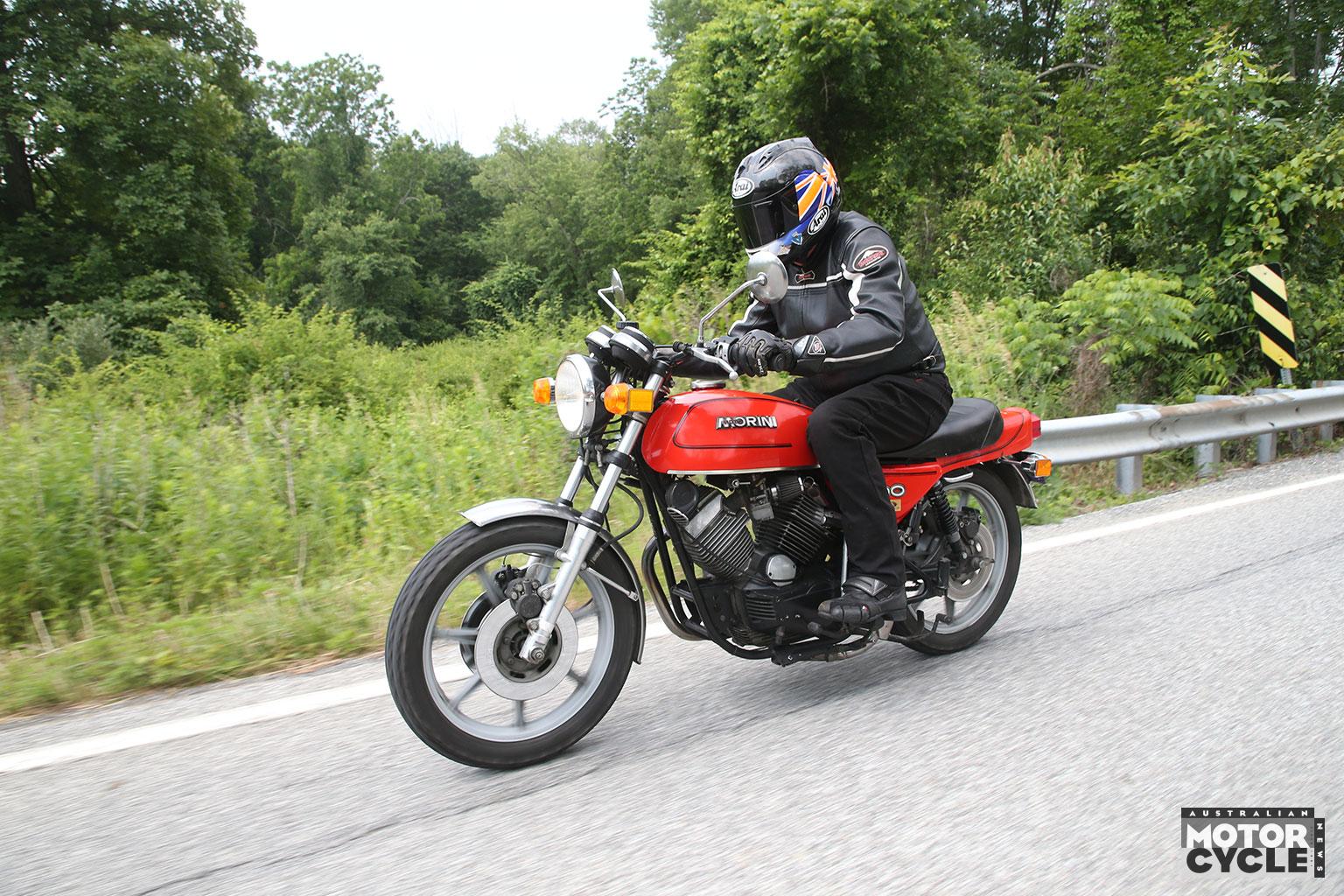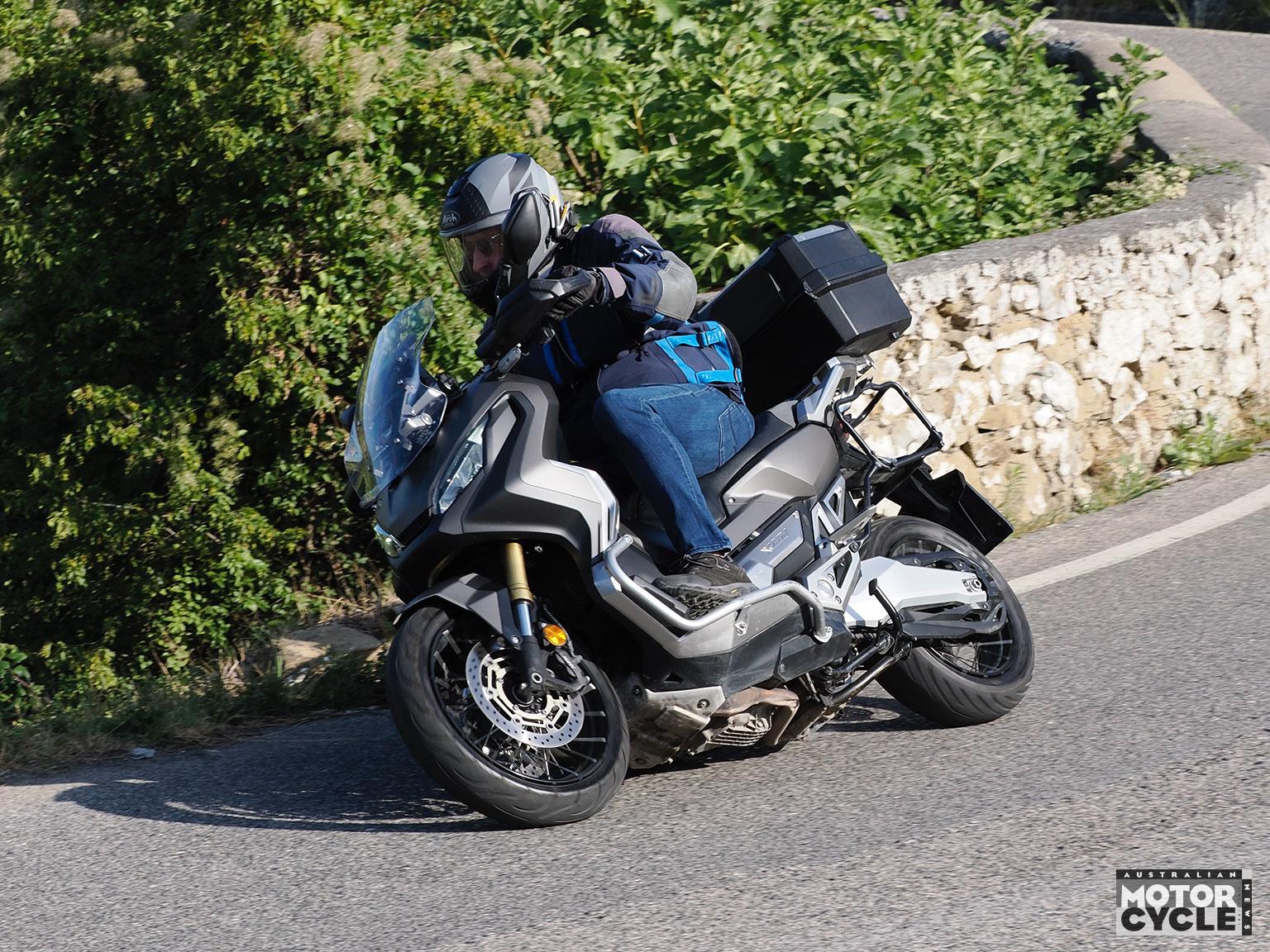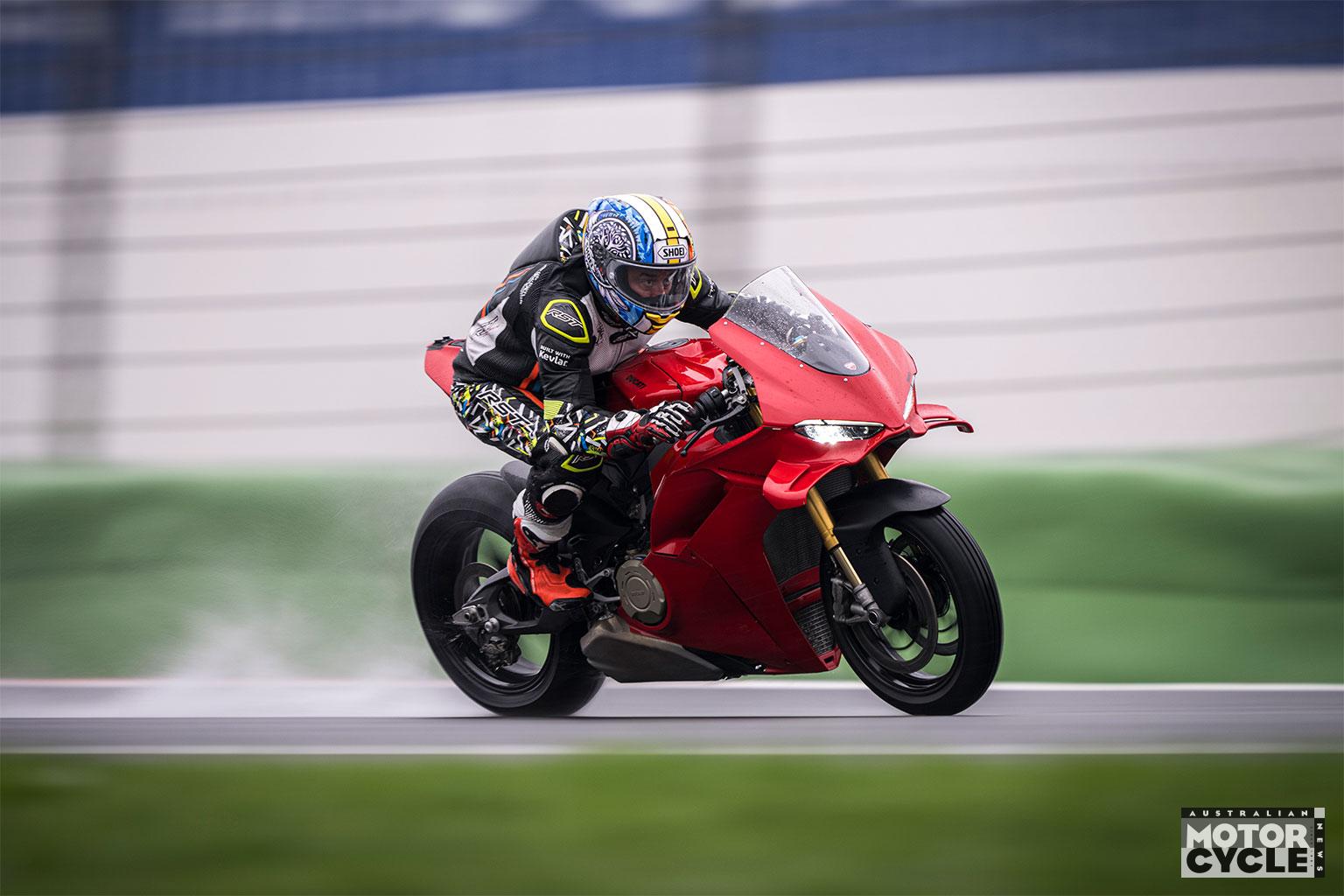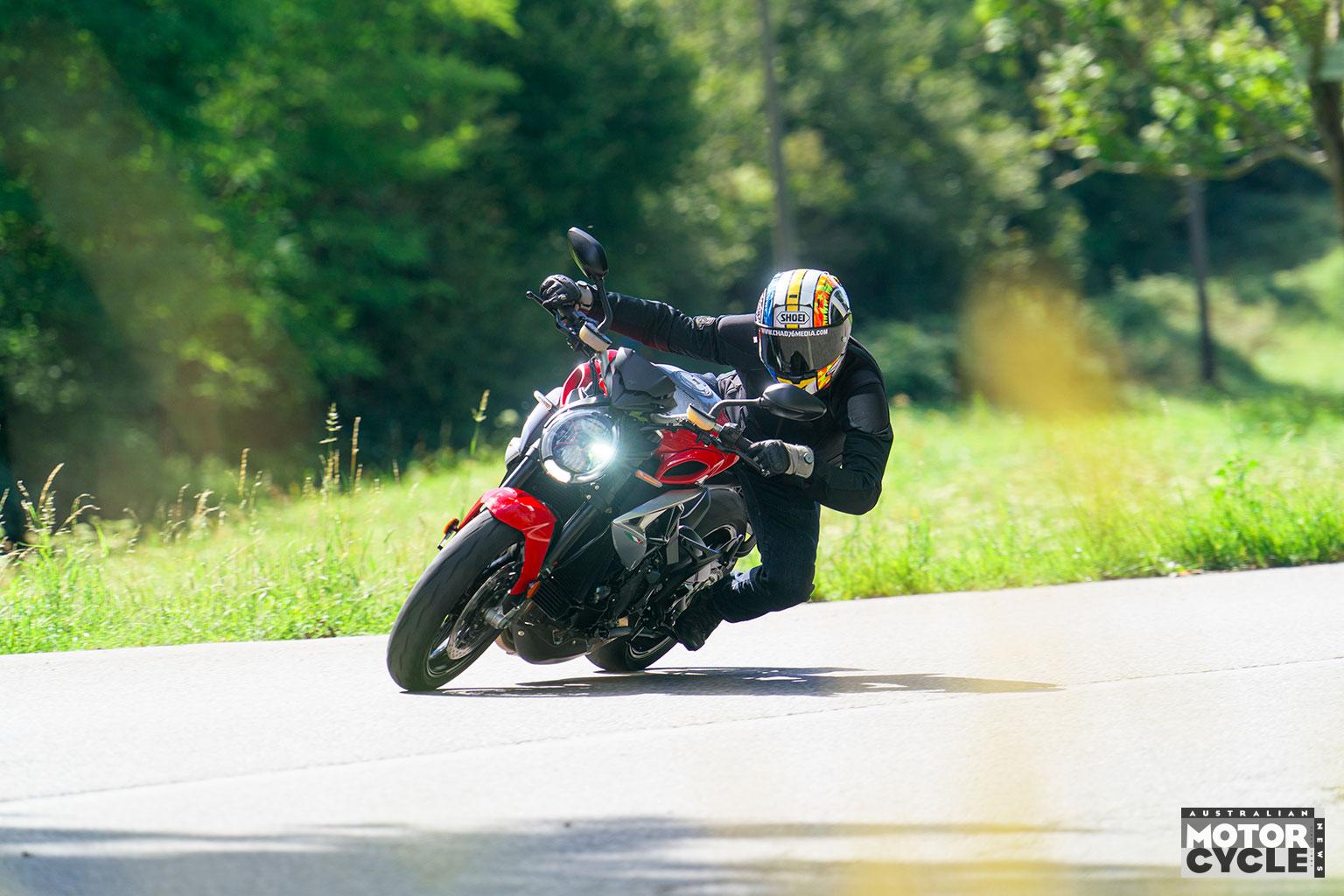Heading down to an underground carpark at dawn in the ancient Mediterranean port city of Barcelona, I see a row of shiny new Royal Enfield Guerrilla 450 roadsters, and the smiles are on the dials of the assembled international press pack, as we are about to ride out into the Catalan hinterland on what promises to be a fine summer’s day.
Royal Enfield also does a lot of testing near Barcelona, so its development riders are very familiar with the mountain roads of the Catalan pre-coastal range that we will be exploring today. I am told that they have planned the most scenic and twisty route on offer, so expectations are high. Even in the pre-dawn light, the bikes we are riding look bright and colourful, and it’s immediately clear that the styling of all the Guerrilla 450 variants is aimed predominantly at the more youthful end of the market.
The most conservative colour schemes are named Smoke Silver (with a metallic matte finish) and Playa Black (gold-flake black metallic gloss). Then there’s more vibrant combinations called Gold Dip (gold metallic and red solid gloss finishes in a vertical split design) and Brava Blue (white pearl gloss with blue sound wave stylings). Craziest of all, and the bike I am to ride, is called Yellow Ribbon. It features bright yellow and black gloss paint with very purple Royal Enfield tank badges, 450 graphics and wheel highlights.
This is clearly a motorcycle that its designers want to stand out from the crowd.

Indeed, Royal Enfield is at pains to convey its belief that the all-new Guerrilla 450 is an exceptional motorcycle that “embodies character, substance and defiance (thereby challenging) dreary monotony”. The launch ad shows young freedom fighters riding Guerrillas through the night in a land of crash-test dummies known as CloneLand. Apparently, these dummies are the rest of the motorcycling community, who have chosen what are labelled “really basic motorcycles” believing that “plastic is fantastic”.
Yes, it’s all a bit over the top for what is essentially a budget LAMS-approved bike, but it does give you an idea of what Royal Enfield is trying to achieve.
It’s betting that the simplicity and retro styling of the Guerrilla is what’s missing in motorcycle markets around the world, and that filling this niche will result in some healthy sales. So, let’s see what they have created in pursuit of this goal.
The Guerrilla 450 is only the second RE to have a liquid-cooled engine. It’s the same Sherpa unit employed in the Himalayan 450, the firm’s do-it-all adventure bike that was released earlier this year and which I rode only recently. A 452cc single with a four-valve head, dual overhead cams and short-stroke design, it is a huge improvement over the Himalayan’s old 410cc engine, so it’s no surprise it’s being used in another new model.

The engine, a stressed member of the tubular-steel frame, produces a claimed 29kW (39hp) at 8000rpm and 40Nm of torque at 5500rpm, with more than 85 percent of torque available from 3000rpm. It has been re-mapped in the Guerrilla for street use and is now powering a slightly lighter, lower and shorter motorcycle than the Himalayan. Weighing a claimed 185kg (with the tank 90 percent full), the Guerrilla is 11kg lighter than the Himalayan, so performance should be marginally improved thanks to a slightly better power-to-weight ratio. Quite a bit of this weight difference comes down to the Guerrilla’s 11-litre fuel tank (compared to a 17-litre unit on the Himalayan), which provides a theoretical range of around 250km.
I can really feel the size difference as I jump on the Guerrilla. The seat height is, of course, much lower than the Himalayan’s and the whole package feels less bulky. That’s not to say that the Himalayan is an unwieldy bike, as it actually feels remarkably nimble once it gets moving. But I get the feeling that its adventure styling is a little off-putting for some newer riders, so the Guerrilla might just do the job of enticing them into the liquid-cooled Royal Enfield club.
With its small windscreen, tubular tank protection, split seat and luggage rack, the Himalayan looks serious and purposeful. In contrast, the Guerrilla looks retro and fun with the nice rising line of the tank, rubber fork gaiters, stepped bench-seat and pillion grab handles.
Personally, as a taller rider, I find the Himalayan’s seat height and riding position very much to my liking, but I am also pleasantly surprised at how comfortable the Guerrilla feels with its upright and quite neutral seating position, well-padded seat and mid-set footpegs. Now I’m keen to see if that impression remains during the full-day ride to come.

The Guerrilla’s urban credentials are tested as we leave the city at the start of the Monday morning peak hour. As you would expect, its smaller dimensions and simple design make it an easy bike to ride in traffic. Lane-splitting is a breeze and, with its 1444mm wheelbase and 780mm seat height, it is a low and nimble city street steed suited to even the smallest rider.
Perhaps the most important differences to the Himalayan come in the form of the shorter (non-adjustable and non-inverted 43mm telescopic) front fork and 17-inch cast-alloy wheels. Indeed, as we exit the city and start to push on into the hills it becomes apparent that the reduction in suspension travel, smaller front wheel, revised head angle, slightly narrower ’bar, and shorter subframe and wheelbase of the Guerrilla compared to the Himalayan combine to create a more agile, quicker-steering package. However, I’d love to ride them side by side to get a real feel for the differences, especially on our more potholed Australian roads. It may be that the Himalayan is actually easier to ride hard in Aussie conditions. Saying that, the size and simplicity of the Guerrilla will appeal to the younger, less-experienced rider who is not likely to ask their bike to tackle multi-day touring trips over crumbling country roads.
The rear suspension consists of a linkage-type monoshock with adjustable preload, and it does the job on the mostly smooth Spanish tarmac. The limits of the chassis and suspension are hard to push past with the relatively modest power output. That’s not to say that the 450 doesn’t have any grunt. As long as you choose the right gear you always have plenty of power on tap. With peak power arriving around 8000rpm, you do need to push into the inevitable vibration zone of a single cylinder, which appears at about 6000rpm. You can feel the buzz through the ’bar, seat and ’pegs as you head up to 8750rpm where it runs out of puff. Staying below 6000rpm is the key for more relaxed riding, and the smooth six-speed gearbox with assist-and-slip clutch is perfect for maintaining this vibe.

There’s not much in the way of electronic trickery that you can call upon to change bike behaviour, but you wouldn’t expect it on a budget roadster. There’s no traction control, but there are two rider modes – Performance and Eco – that can be switched on the fly. There is a dual-channel ABS system working with the Bybre brakes. With a single fixed 320mm disc and two-piston caliper up front and a 270mm disc and single-piston caliper at the rear, braking performance is not mind blowing, but it is more than enough for the bike’s size and performance level.
I have to seriously drop the anchors a couple of times during the day, due to unexpected pit stops, and each time they do the job, with good feel at the lever and a predictable ABS shudder.
The CEAT Gripp XL Rad Steel tubeless tyres are quite chunky and match the styling of the bike well, having been designed and produced in India specifically for the Guerrilla. And, just as with the more off-road-oriented CEATs on the Himalayan, they perform better than expected. Grip is more than adequate on the dry, smooth tarmac, with predictable feedback front and back even under heavy braking. Nevertheless, I do wonder how much stickier rubber would improve the bike’s handling when really pushed.

When we stop for lunch at a hilltop restaurant with a view of the magnificent Montserrat mountain range, I notice that the sound of the Guerrillas in the riding packs behind mine is more robust than I’d expected. They emit quite a nice burble as they wind up through the twisties, and I’m sure the engine note is slightly louder than on the Himalayan. I mention this to an RE engineer on the ride and he informs me that, despite the fact that the upswept exhaust on the Guerrilla looks similar to the Himalayan’s, it’s a different unit. I also point out that the header on my bike has turned a lovely shade of purple-blue, which matches the purple tank badges, 450 graphics and wheel highlights beautifully. I ask if this was a conscious styling exercise but the engineer just looks at me like I’m crazy (and, no, I hadn’t had a Spanish coffee before the ride).
I take some time after lunch to play around with the instruments and electrics. The base variant employs the same semi-digital instrument console found on the Super Meteor 650. It has a traditional analogue speedo with digital odo, fuel gauge, gear-shift indicator and so on. You could choose this variant and add the optional Tripper pod, which enables smartphone connectivity with turn-by-turn navigation. However, I feel that by far the most popular choice in Australia will be the mid and top variants that feature the Tripper Dash found on the Himalayan. This is a four-inch TFT display that offers the choice of analogue or digital screens and which has a digital speedometer and tachometer, fuel and ambient temperature gauges, clock, and gear and mode indicators. It also features map navigation, with a joystick that controls music, calls and messages coming from a paired phone. An app also offers enhanced features, such as route recording and sharing (in GPX format).
The Guerrilla 450 will be sold in three variants – Analogue, Dash and Flash. Analogue does not have a TFT cluster and only comes in Smoke Silver and Playa Black. Dash has the TFT display and comes in Playa Black and Gold Dip. The Flash variant also has the TFT display and comes in what will be slightly more expensive Brava Blue and Yellow Ribbon colour schemes. There is also a long list of genuine accessories on offer, including engine and sump guards, urban and bench seats, tinted flyscreen, blacked-out mirrors and soft panniers.

Royal Enfield has also introduced a ‘Borderless Warranty Program’ that allows work to be done at the 3000-plus service centres in more than 70 countries. This is obviously not so relevant to Australian owners and is aimed more at the European market, but it does give an indication of RE’s ambition to increase its global presence.
At this stage pricing details are yet to be confirmed but our guess is the Guerrilla 450 (even with the TFT) will have to be priced lower than the Himalayan. So we say it will probably come in at around $8990 ride away. Australian distributor Urban Moto Imports (UMI) says that the Guerrilla will be available in Australia around late September or early October.
But these details are far from my mind as we ride through the Barcelona hinterland and back to our base by the sea. Even the inner-city traffic snarls don’t phase us as we weave through the gridlock, the smile still on my face after a day of old-school motorcycling in a sunny and exotic location. It doesn’t get much better than that, and I seriously doubt that I could have had any more fun on a bike four times the price of the Guerrilla 450. I guess that means that the Royal Enfield designers nailed their brief and have produced a model that combines fun and performance in a budget package. It will be very interesting to see how the market responds.
PROS: Fun, simple and well-made with a relaxed ride, but you can still push it quite hard. Nice to see a centrestand as standard fitment.
CONS: It faces some stiff budget competition, especially from Royal Enfield’s own line-up. A bit vibey at higher revs but nothing unexpected from a single.

THERE & BACK
As the world’s oldest motorcycle brand in continuous production, Royal Enfield started making motorcycles, bicycles, lawnmowers and stationary engines in Worcestershire in 1901, but its British base started the shift to India when a manufacturing plant was established in Madras in 1955. The last Royal Enfield motorcycle production run in the UK was in 1970.
Nevertheless, there is still a strong Anglo-Indian connection, with a Royal Enfield technology centre opening in 2017 at Bruntingthorpe Proving Ground, near Leicester. A team of British engineers, designers and testers now work behind the scenes with the brand in its quest to increase its international presence, having already become so dominant in the Indian market.
SPECIFICATIONS ROYAL ENFIELD GUERRILLA 450

ENGINE
Capacity 452cc
Type Single cylinder, DOHC, four valves
Bore & stroke 84mm x 81.5mm
Compression ratio 11.5:1
Cooling Liquid
Fueling EFI, 42mm throttle body
Transmission Six-speed
Clutch Wet, multi-plate, slipper
Final drive Chain
PERFORMANCE
Power 29kW (39hp) @ 8000rpm (claimed)
Torque 40Nm @ 5500rpm (claimed)
Top speed 160km/h (claimed)
Fuel consumption Not measured
ELECTRONICS
Type Not given
Rider aids Dual-channel ABS
Rider modes Performance or Eco
CHASSIS
Frame material Tubular steel
Frame type Cradle
Rake 21.8°
Trail 91mm
Wheelbase 1440mm
SUSPENSION
Type Showa
Front: 43mm non-adjustable fork, 140mm travel
Rear: Monoshock, preload adjustable, 150mm travel
WHEELS & BRAKES
Wheels Cast alloy
Front: 17 x 3.5
Rear: 17 x 4.25
Tyres CEAT Gripp XL Rad Steel
Front: 120/70R17
Rear: 160/60R17
Brakes ByBre, ABS
Front: Single 320mm disc, twin-piston caliper
Rear: Single 270mm disc, single-piston caliper
DIMENSIONS
Weight 185kg (90% fuel, claimed)
Seat height 780mm
Width 833mm
Height 1125mm
Length 2090mm
Ground clearance 169mm
Fuel capacity 11L
SERVICING & WARRANTY
Servicing 1000km
Minor: 10,000km
Major: 20,000km
Warranty Three years, unlimited km
BUSINESS END
Price TBC
Colour options Smoke Silver, Playa Black, Gold Dip, Yellow Ribbon and Brava Blue
CONTACT
www.royalenfield.com.au
















